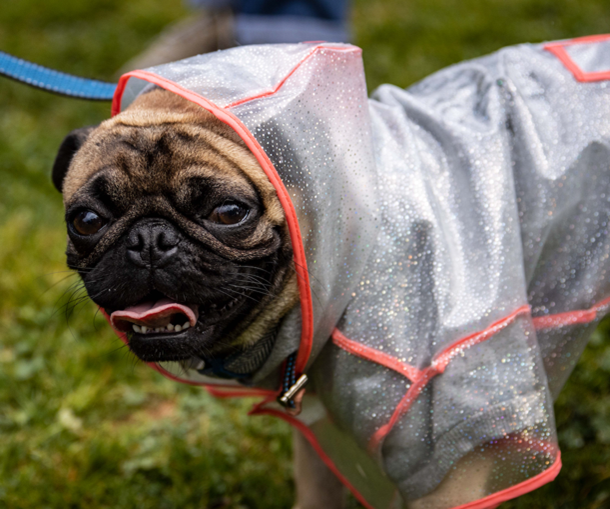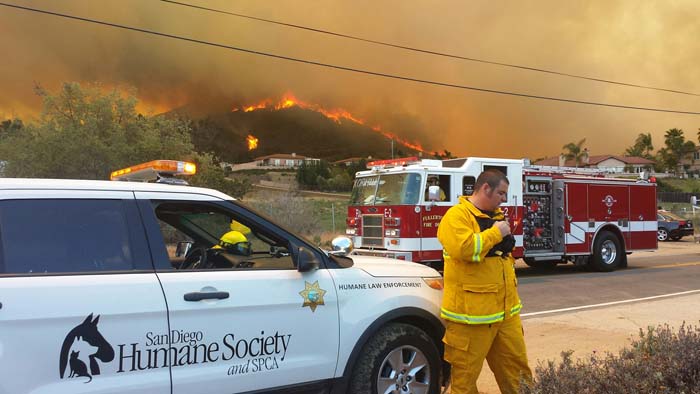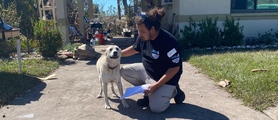Animal People:
Nancy Peterson
Animal Advocate and Author
During a long career in animal welfare, Nancy Peterson has made incredibly impactful changes for the animals she loves — cats. Now retired, she continues to advocate for animals and share resources to help rescuers and organizations connect. In our Animal People interview, Nancy shares insights she's learned from her time with animals and the dedicated people who care for them.
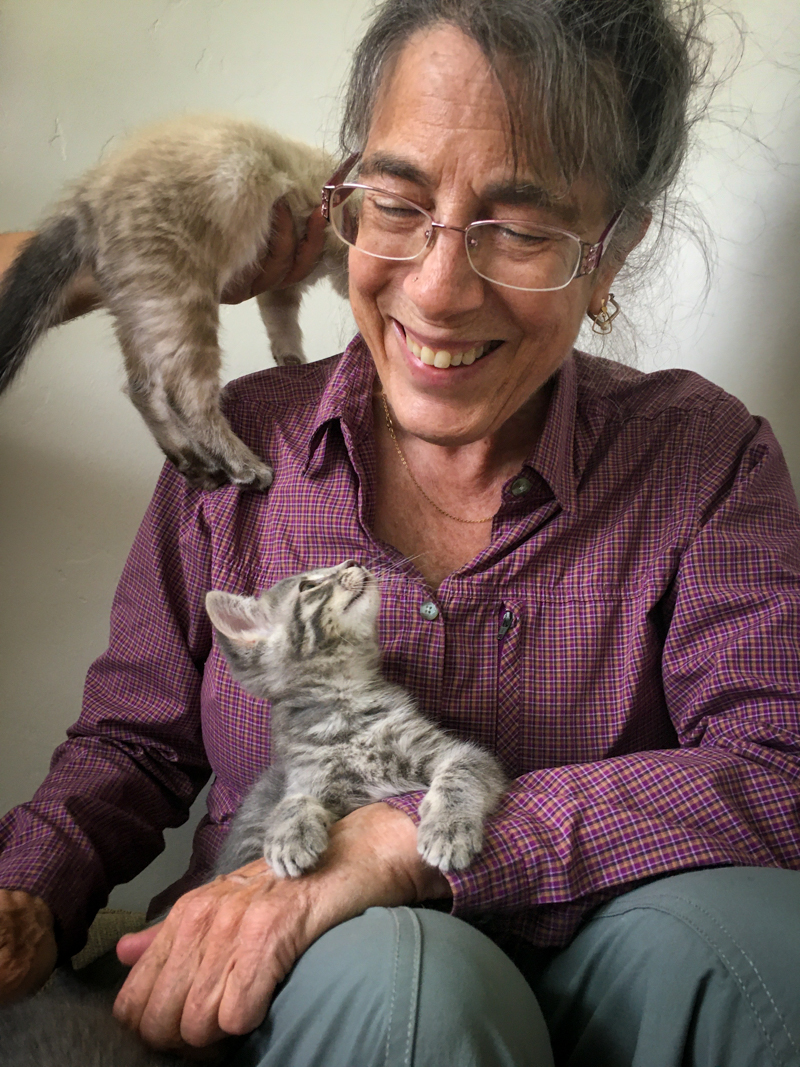
Were animals always a big part of your life?
As a child, both my parents worked and didn't allow us to have pets, but I always begged for a dog. We did have seven parakeets and two gerbils. Every so often, I brought home kittens, cats and even dogs I found. I would bring them inside and offer them water and something to eat. My mom always found out and made me find new homes for them. The last animal I brought home was a little puppy who I found on the subway when I was going to college in the city. I felt something on my leg and looked down and there was a puppy. I looked around because I thought he must be with somebody, but he started to wander between the car doors and I picked him up and took him to classes with me. Still, my mother said, "No," and I found a new home for him.
When did you find your affinity for cats?
When I lived in upstate New York, I had a friend who had a cat and I really got to know cats. I just adored them! I love all animals, but I really have a passion for cats. My first real pet was Shasta, a gray kitty. She was about 5 or 6 months old when I brought her home to my apartment, where my landlord lived downstairs. My landlord left me a note that said, "When is your houseguest leaving?" My landlord "hated" cats but I begged them to let me keep her and promised they would never even see her. I won them over by comparing my love to my landlords' love for their beagle. Shasta even moved across the country with me to San Diego.
Did you always know you wanted to work with animals?
When people would ask, "What do you want to be when you grow up?" I'd say I wanted to be a zookeeper. People would respond with how dangerous, difficult and dirty that profession is, and they totally dissuaded me. Now, I tell people to never smash children's dreams like that. When I went to college, I majored in anthropology and archaeology, which I'm thrilled that I did because it gave me a wonderful view of the world, different cultures and differences in people. That led me to administrative work, and it really wasn't for me.
Where did you get your start in animal welfare?
I moved to San Diego and called the San Diego County Veterinary Medical Association asking whether there were any programs that trained people to work with dogs and cats, and learned they had just started a veterinary technician program at San Diego Mesa College. I applied, and, in order to have more animal experience, I started volunteering at San Diego Humane Society in 1977 cleaning kennels and things like that. I graduated and was a registered veterinary technician for 12 years in San Diego.
I feel very connected to San Diego Humane Society still, from my time as a volunteer and from visits through my career. I know Dr. Gary Weitzman, SDHS president and CEO, from his days as the director of a shelter in Washington, D.C. I also wrote an article about the awesome kitten nursery for Animal Sheltering magazine. I've been to a lot of shelters through the years, for work and even on vacations, and San Diego Humane Society is one of the best shelters in the United States. I'm so proud of everything this shelter has done.
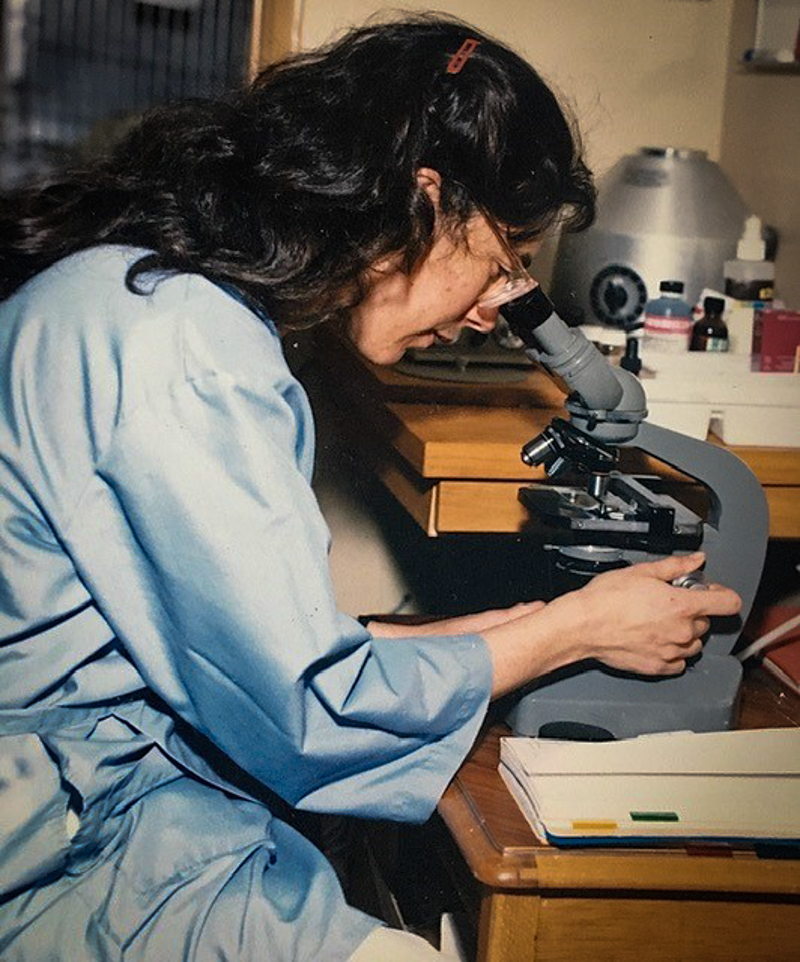
When did you join the Humane Society of the United States?
I moved to Maryland to be closer to family and was hired to work for the Humane Society of the United States, the nation's largest animal protection organization, in 1998, where I worked until I retired. My first five years, I was an "issues specialist." I was responsible for any issues that arose for dogs, cats or any other animals. I coordinated the Pets for Life training program for folks from all different shelters, teaching staff and volunteers to implement behavior programs to prevent animals in their care from deteriorating behaviorally and establish behavior helplines. After that, I was ready for a new challenge, and my supervisor suggested feral cats. All I heard was "cats" and I said yes. I was the community cats program manager for the next 10 years, and it was a very controversial issue, but I loved it. I had a fantastic mentor — Bryan Kortis of Neighborhood Cats, a TNR [trap, neuter, return] organization founded in New York City. The work was very close to my heart.
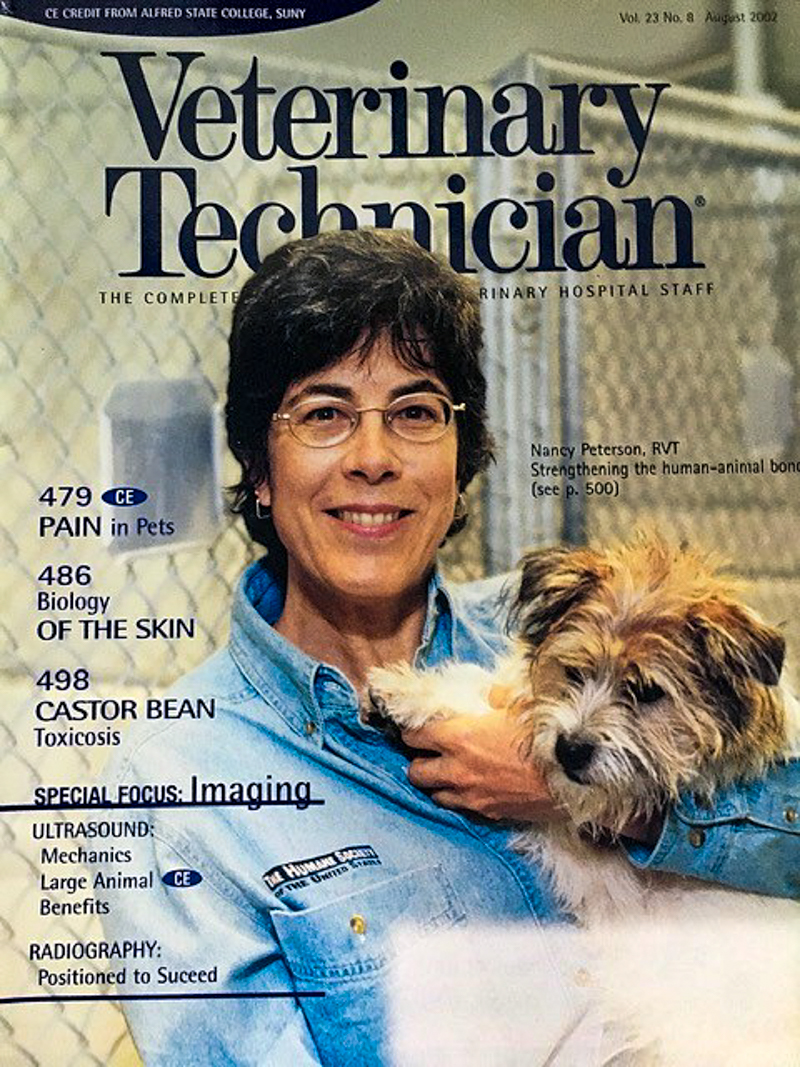
What has your career taught you about cats?
I definitely think that cats are underdogs. Cats are seen as mysterious creatures, but really their behaviors make total sense. I feel it's very important that we as people understand cats, why they do the things they do and help meet their needs. We need to provide them with scratching opportunities, high perches, clean litter boxes and fresh food and water. I play with my cats and groom them, and I even built them a catio (enclosed outdoor space), which they're not particularly interested in! People think cats are not as affectionate or smart as dogs, and that they're much easier to have as pets. Cats have as many personalities as people and you just need to find the right cat for you. There are definitely some cats who are unbelievably loving, and the match is important. It's so much fun having a cat.
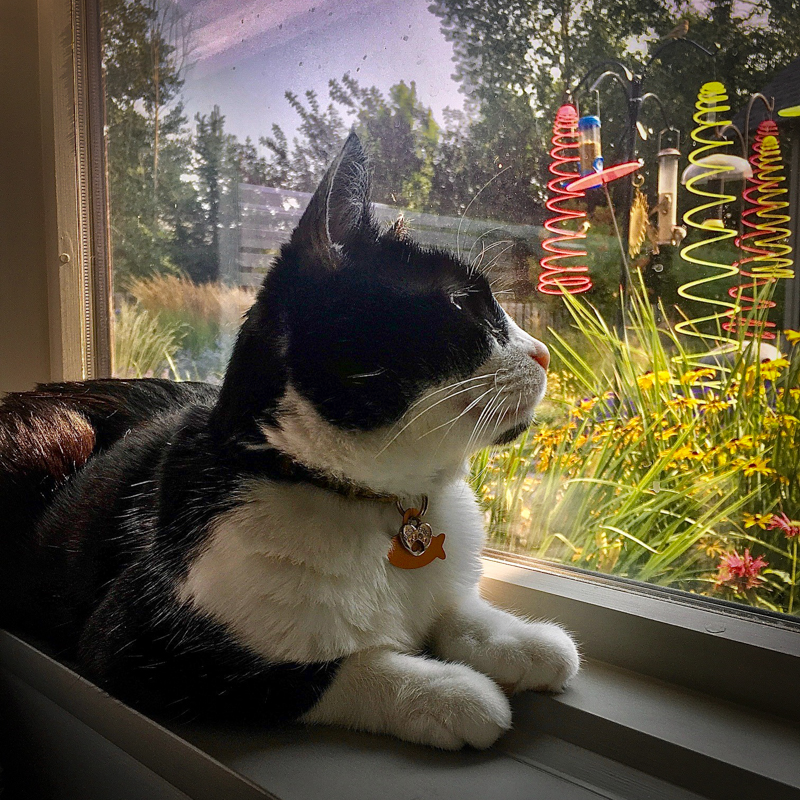
Do you have any cats at home now?
I have Jenny, an 11-year-old sweet tuxedo cat. I'd gotten her and her four siblings when they were just 4 1/2 weeks old, living outdoors in Maryland. I was fostering them on my own and couldn't find homes until they were 7 and 11 months old — but I kept Jenny, not because I was so in love with her, but because she loved my other cat, Toby, who was an old man. It was really interesting, because she'd rather hang out with Toby than her siblings. She also had a couple of health issues so I decided she could stay. I had adopted Toby from the shelter when he was at least 10 years old. I traveled when I worked for the HSUS and visited a lot of shelters. My sister always said, "Do not bring home another cat." Well, I was really good until I met Toby at a shelter in Florida.
Now I just have Jenny, and I foster kittens for my local shelter, Colorado Animal Rescue. We built a house and I made sure it had a little kitten room, so I can continue to foster and separate the kittens from my cats. It's fascinating to see, in that short period of time, how they physically and behaviorally develop. I love fostering — I call it kitten therapy, and there's nothing better! If you're not feeling good, just go sit with those kittens and it's an instant mood boost.
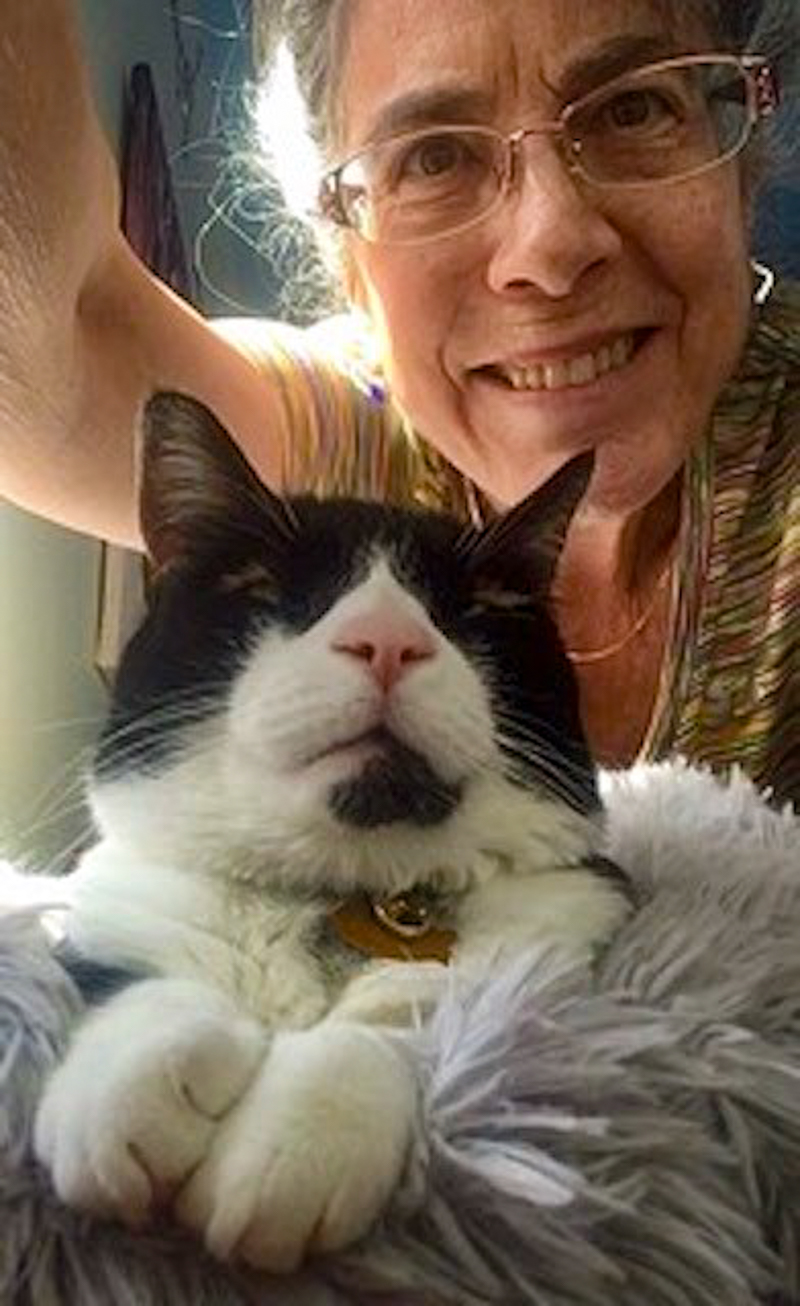
What are some of your career highlights?
In 2009, I remember there were many feral cats on San Nicolas Island, a Navy-owned area in the Channel Islands. The U.S. government was going to eradicate the cats from the island and our team at HSUS submitted a proposal to prevent the cats from being killed. We were able to work with the Navy and other government officials to fly the cats off the island and relocate them to the Fund for Animals in Ramona (now San Diego Humane Society's Ramona Wildlife Center). That was one of the highlights in my career with HSUS.
It was also meaningful to be able to change the way feral cats are thought of. When I became the community cats program manager, the first thing I did was rewrite our mission statement on feral cats and TNR. I worked with our wildlife folks and animal sheltering staff, who each had valid concerns to protect animals they cared about. I also worked to prevent declawing in cats, except in cases where it is medically necessary. Those were two of the most controversial issues that I tackled.
What advancements have you seen in animal welfare through the years?
I'm thrilled that more and more shelters, shelter medicine programs and veterinary colleges are paying more attention to cats and providing research so we really do know how to meet their needs. When veterinary medicine first started, it was all about horses and livestock. As the automobile came into the picture and farming was mechanized, veterinarians needed new patients, and those became dogs and cats. As cat litter was invented and cats could be kept indoors, it opened up a whole new world. Now, we're learning to approach and handle cats in ways that are kinder and gentler, and allow us to really understand what's going on with pets. Fear Free is a fantastic program to help people who have animals, fosters, animal shelters — anyone who is caring for animals. The program helps animals feel safe, which is so important. Even in my house, my cat needs to feel safe. I can't be blaring loud music because their hearing is so sensitive. I can't be chasing them or dragging them out from under the bed. There are better ways to interact.
TNR is becoming more popular, and more shelters are finding ways to help cats who live outdoors. They're undersocialized and would be unhappy and really terrified if they were living indoors. Research is showing that when TNR is done strategically and sustained, it's effective in reducing the population over time.
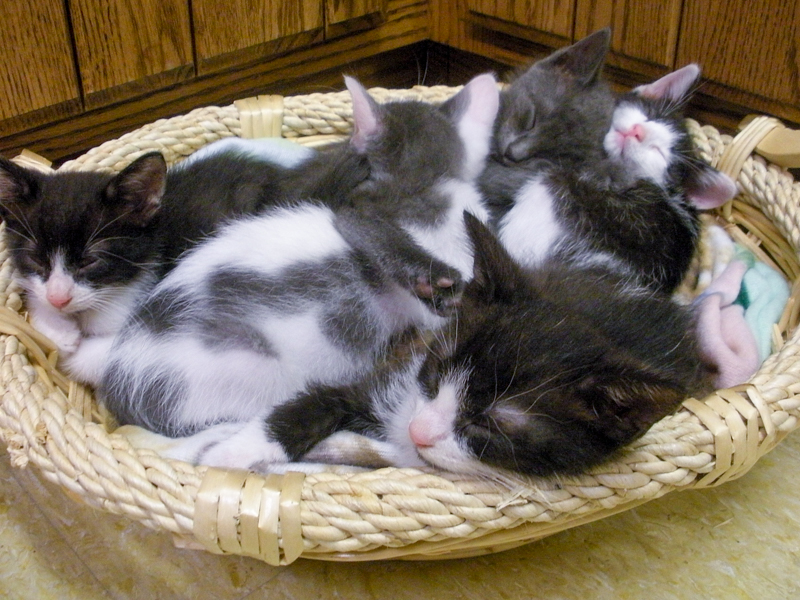
How have you continued to advocate for the animals you care about?
In retirement, I am trying to build bridges between cat advocates and bird advocates. We all agree that we want fewer outdoor cats, but it's the way that we get there. During COVID, I became an avid birder. I'm reaching out to Audubon societies and conservation organizations to start talking about this issue. I just keep plugging away, and I really hope that we can make some progress. A lot of the bird lovers believe that we don't care, but this just isn't the case. What I think they don't see is that many cat advocates do care about birds and many of these TNR folks are volunteers, often doing this with their own time and money. Now, I'm a board member for Neighborhood Cats and the National Kitten Coalition. I adore the work done by both of these organizations.
When I started at HSUS, I was no writer. I was writing papers and articles, and they'd come back to me entirely marked up. I co-authored a chapter in the biannual book put out by the HSUS, "State of the Animals," about declawing in cats and researched the history of when cats first came indoors. It was a fascinating research project, and it inspired me to be a freelance writer and president of the Cat Writers' Association. Writing is such a powerful tool. It can make an impact, teach people and hopefully changes minds on important issues like declawing and spay/neuter. I'm so happy to be able to use my writing to make the world a better place for animals.
Published: December 27, 2021



